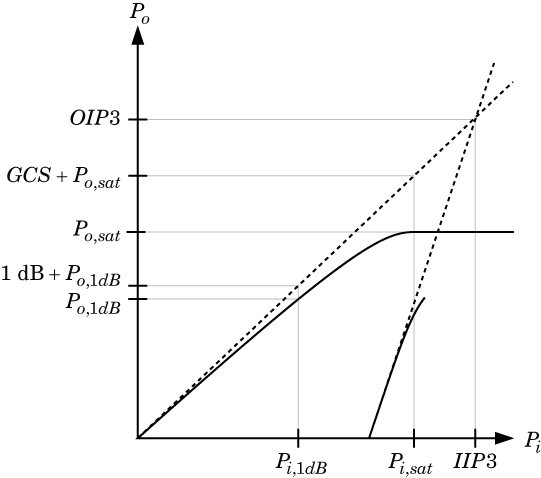Mixer
Model mixer in RF systems
Libraries:
RF Blockset /
Circuit Envelope /
Elements
Description
The Mixer block performs signal frequency translation and nonlinear amplification.
For a given RF input signal, VRF = ARFcos(ωRFt) and an LO input signal VLO = AcLOcos(ωLOt), the mixer multiplies the signals at the input ports:
This mixing converts the frequency of RF signal to ωRF + ωLO and ωRF – ωLO. For the mixer to perform this operation correctly, you must include the frequencies ωRF + ωLO or ωRF – ωLO in the simulation frequencies the Configuration block calculates.
The Power gain specification for this block relates the power of a single-sideband (SSB) to the input.
After mixing the RF and LO signals, the mixer block performs amplification. To model linear amplification, the mixer scales the signals by the coefficient a1. A Voltage Controlled Voltage Source (VCVS), specified with a polynomial, implements nonlinear amplification. The polynomial includes saturation automatically and produces additional intermodulation frequencies.
Mixer block mask icons are dynamic and indicate the current state of the applied noise parameter. This table shows you how the icons on this block vary based on the state of the Noise figure (dB) parameter on the block.
Noise figure (dB): 10 | Noise figure (dB): 0 |
|---|---|
|
|
|
Examples
Parameters
References
[1] Razavi, Behzad. RF Microelectronics. Upper Saddle River, NJ: Prentice Hall, 2011.
[2] Pozar, David M. “Microwave Engineering”, Hoboken NJ: John Wiley & Sons, 2005.





